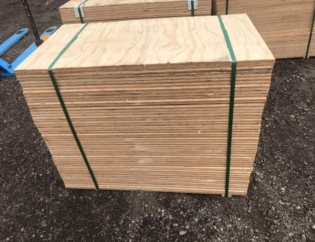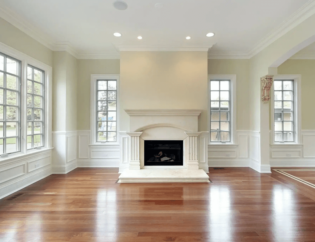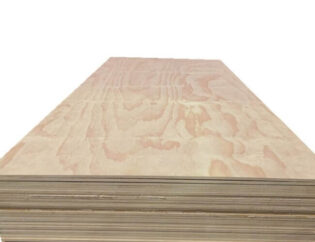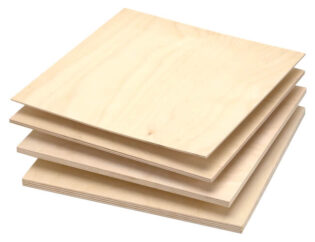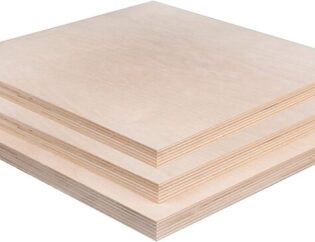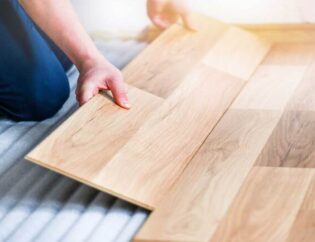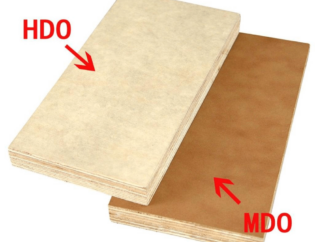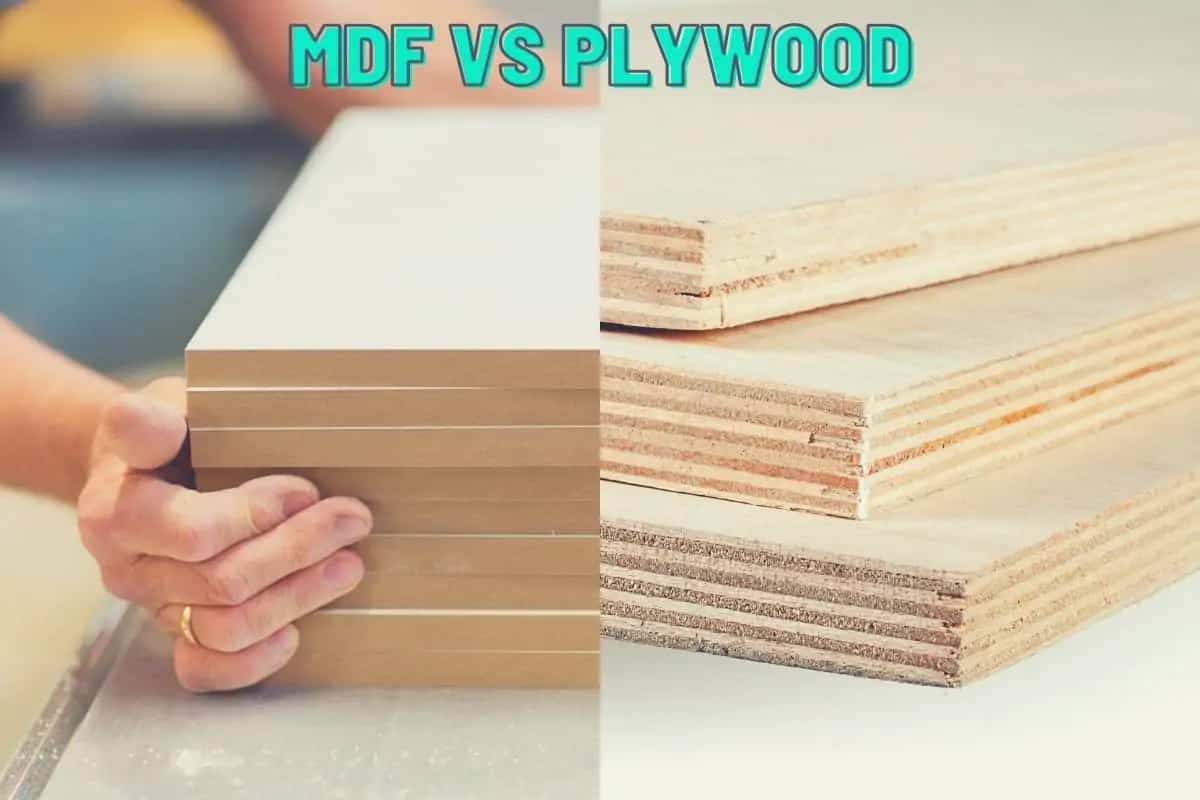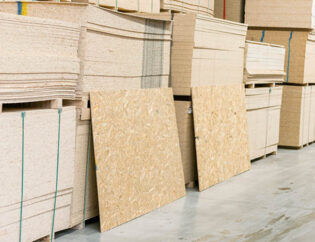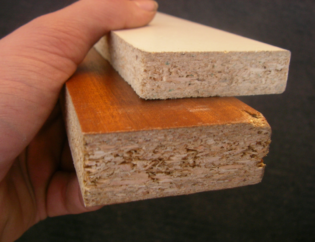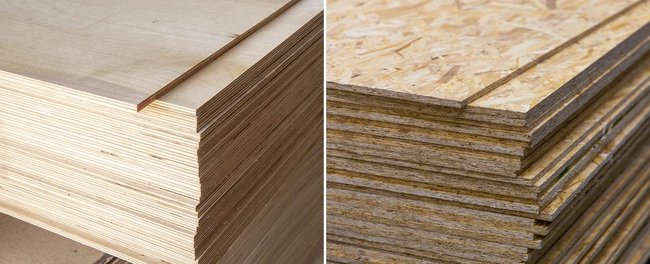
Oriented strand board (OSB) and plywood are types of wood structural panels created by compressing and gluing wood pieces together. Although OSB and Plywood look similar and can often be used interchangeably, the distinct manufacturing processes of each result in unique strengths and weaknesses.
OSB and Plywood: how are they made?
OSB, or Oriented Strand Board, has a rough appearance. It is produced from heat-cured adhesives and rectangular-shaped wood strands that are arranged in cross-oriented layers. Manufactured in large, continuous mats, OSB results in a solid-panel product of consistent quality with few voids or gaps. This engineered wood panel shares many strength and performance characteristics with plywood.
Plywood, on the other hand, is made from thin sheets of veneer, which are layers of wood peeled from a spinning log. These sheets are cross-laminated and glued together using a hot press. The grain of each layer is positioned perpendicular to the adjacent layer throughout the panel’s thickness. The finished product is made with an odd number of layers to maintain balance around its center. Because plywood is made from whole layers of logs rather than small strands, it has a more consistent and less rough appearance compared to OSB.
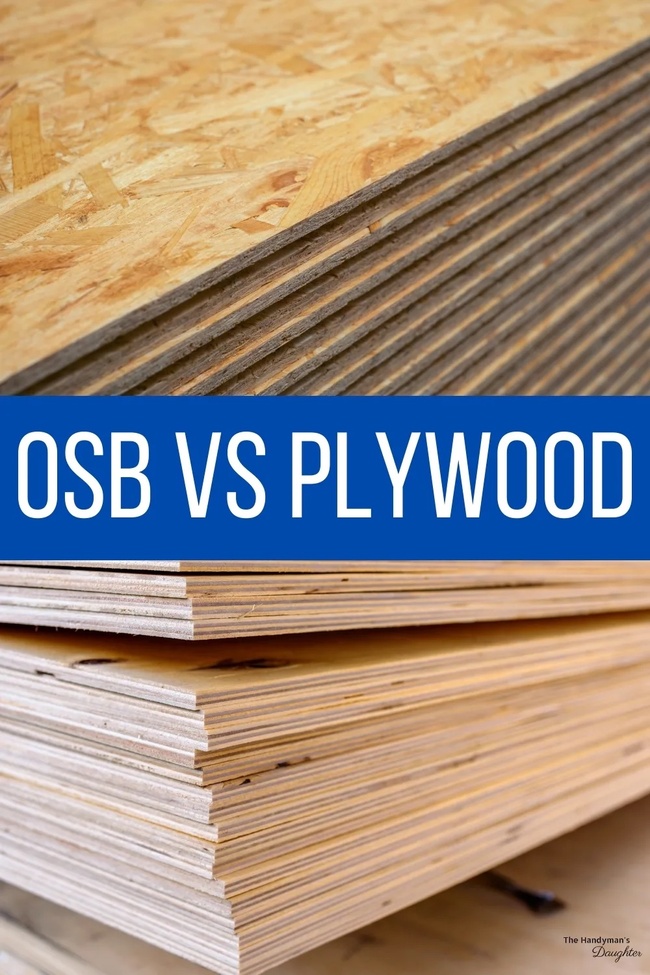
Pros and cons of OSB and Plywood
Here are the pros and cons of OSB and Plywood:
OSB Pros and Cons
According to an article by the University of Massachusetts, oriented strand board (OSB) is a relatively new material. Its predecessor, waferboard, was first produced in 1963 in Hudson Bay, Saskatchewan, using a random alignment of wood fibers from aspen trees. Initially known as chipboard, this material evolved into the structurally superior OSB in 1991.
OSB is favored by many in the protective packaging industry for several reasons:
- Size: OSB can be manufactured into larger panels than plywood.
- Cost: OSB is generally more affordable than plywood.
- Uniformity: OSB has fewer voids, soft spots, or gaps, making it more uniform.
- Environmental Impact: OSB is considered more environmentally friendly since it can be made from scrap and smaller trees, rather than old-growth trees.
- Durability: Unlike plywood, OSB does not delaminate under humidity or extreme heat.
However, OSB has some drawbacks:
- Weight: OSB is heavier than plywood.
- Fastening: OSB doesn’t hold screws, nails, and fasteners as firmly as plywood.
- Moisture Sensitivity: OSB swells more than plywood when exposed to moisture and tends to remain swollen.
- Off-gassing: While both materials off-gas formaldehyde, OSB releases more of this harmful gas than plywood.
Plywood Pros and Cons
The University of Massachusetts reports that the first structural plywood was produced by the Portland Manufacturing Company in 1905. Initially, until the mid-1930s, plywood was bonded using non-waterproof blood and soybean glue. It was only with the development of waterproof synthetic resins during World War II that manufacturers could effectively reduce delamination. By the late 1960s, advancements in adhesion technology enabled the use of Southern Yellow Pine (SYP) in plywood production.
Advantages of Plywood:
- Plywood is lighter than oriented strand board (OSB).
- Nails, screws, and other fasteners tend to stay more securely in place with plywood compared to OSB.
- Plywood panels swell less than OSB when exposed to moisture, and they typically return to their original thickness once dry.
- Plywood emits fewer harmful gasses than OSB.
Disadvantages of Plywood:
- Plywood is more expensive than OSB.
- Plywood sheets are not as large as those of OSB.
- Plywood may contain voids or gaps between the layers.
- The use of wood veneer sheets in plywood makes it less environmentally friendly.
- Plywood can delaminate or separate when exposed to humidity or extreme heat.
> Read more: Laminate Flooring: Everything You Need to Know
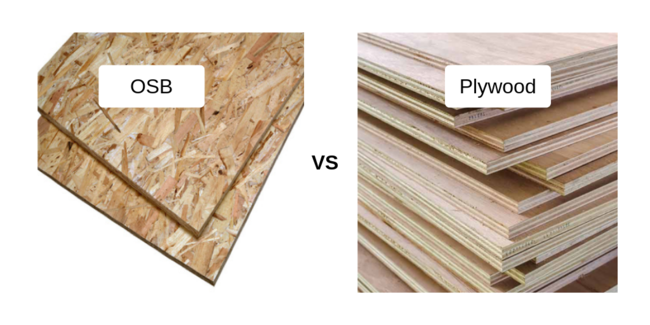
Strength and Durability of OSB and Plywood
OSB and Plywood are comparable in terms of strength and durability. This fact often surprises consumers, as OSB appears to be merely a collection of wood pieces glued together. Nonetheless, building codes acknowledge both plywood and OSB as having similar properties, using the term “wood structural panel” to describe them.
However, there is a notable difference: plywood subfloors are approximately 10% stiffer than those made from OSB. Consequently, OSB floors are more prone to:
Squeaking due to floor movement
Causing hard floor surfaces, such as tile, to crack
Resulting in soft, spongy floors
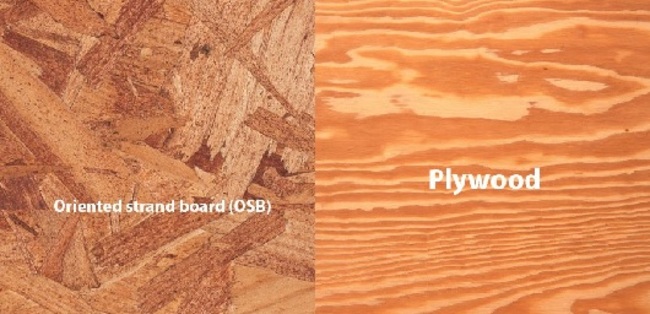
Cost Comparison: OSB vs. Plywood
When comparing OSB (Oriented Strand Board) to plywood in terms of cost, OSB is generally more affordable. Here’s why:
- Raw Materials: OSB is made from smaller wood strands, often byproducts of lumber manufacturing, making it cheaper to produce than plywood, which requires larger, higher-quality veneers.
- Manufacturing Process: OSB production is more efficient and less labor-intensive. It involves compressing wood strands with adhesive resin, unlike plywood, which requires layering and gluing thin wood veneers.
- Market Demand: OSB’s cost-effectiveness has increased its popularity in construction, leading to greater production economies of scale and competitive pricing.
- OSB vs plywood price: While prices can vary based on supply, demand, and market conditions, OSB is typically more consistently affordable than plywood.
Although OSB is usually cheaper, plywood may offer better moisture resistance, structural stability, and aesthetic appeal, which can justify its higher cost for specific projects. For instance, a 4×8 foot sheet of plywood costs about $10, whereas an OSB sheet of the same size costs about $6. Both materials have the same installation cost of $70 per hour for a carpenter.

Choosing Between OSB and Plywood
When deciding between OSB and plywood for construction or industrial use, factors such as cost, packaging design, and environmental considerations play a significant role. The decision ultimately depends on your specific application needs. Manufacturers weigh various factors like panel size, weight, and consumer-facing aspects. For those prioritizing eco-friendliness, OSB is often favored. Your packaging designer can provide tailored recommendations based on your needs and overall packaging costs.
In the above article, hopefully, you can grasp information about OSB and plywood. VINAWOOD has also helped you compare OSB vs plywood strength and OSB vs plywood water resistance. If you’re considering OSB vs plywood for flooring, please visit VINAWOOD’s website.
In the above article, hopefully, you can grasp information about OSB and plywood. VINAWOOD has also helped you compare OSB vs plywood strength and OSB vs plywood water resistance. If you’re considering OSB vs plywood for flooring, please visit VINAWOOD’s website.

